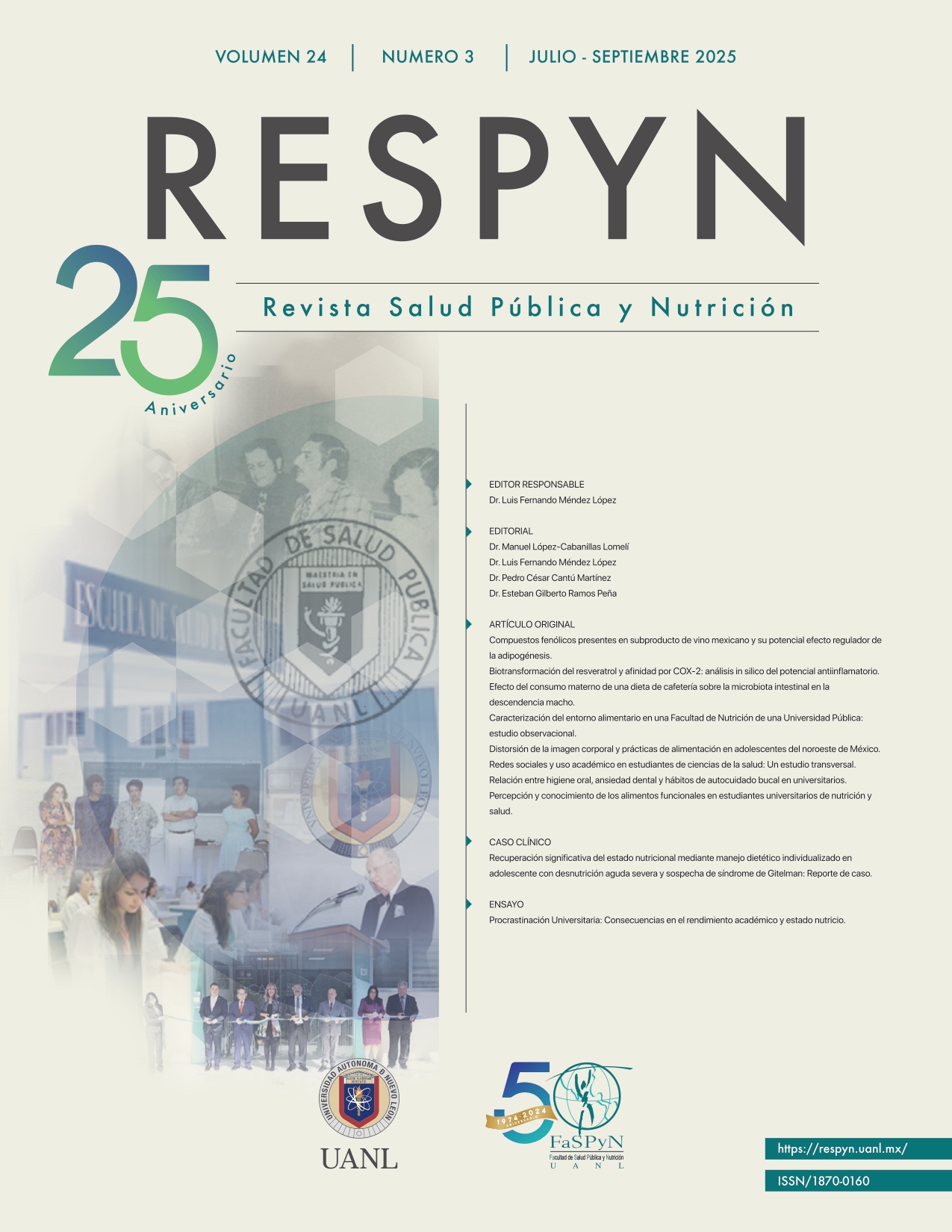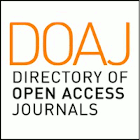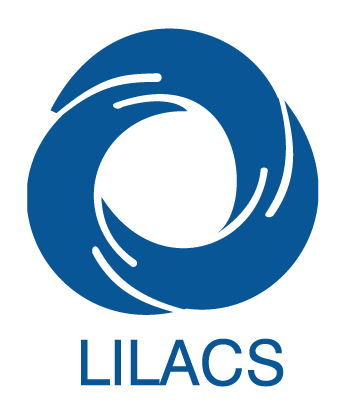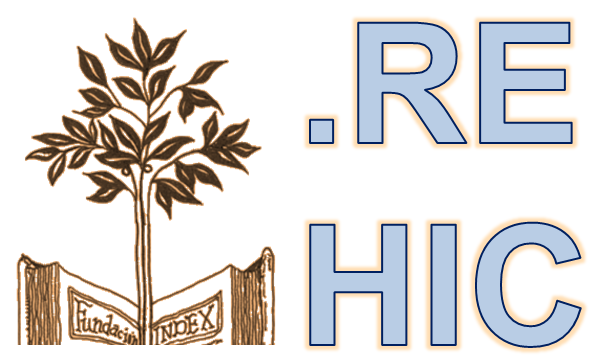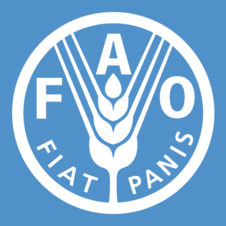Efecto del consumo materno de una dieta de cafetería sobre la microbiota intestinal en la descendencia macho
DOI:
https://doi.org/10.29105/respyn24.3-886Palabras clave:
microbiota intestinal, dieta materna, programación fetalResumen
Introducción: Algunos de los factores más importantes que determinan la composición de la microbiota intestinal son el estilo de vida y la alimentación, programando a la descendencia al desarrollo de enfermedades en la edad adulta. Objetivo: Evaluar el efecto del consumo materno de una dieta de cafetería durante la etapa perinatal en ratones C57BL/6 macho sobre la microbiota intestinal en su peso, ingesta dietética y microbiota intestinal. Material y Método: Ratones hembra C57BL/6 fueron alimentados con dieta estándar y de cafetería durante la etapa perinatal (9 semanas). Tras el destete (día 21), se seleccionaron 10 crías macho por grupo y se mantuvieron con dieta control hasta la semana 8, momento en que se recolectaron muestras fecales para análisis de microbiota. Resultados: El grupo cafetería presentó menor ingesta y peso corporal comparado con el control. Se observó un aumento significativo de Parabacteroides distasonis, Mucispirillum schaedleri y Lactobacillus reuteri, y una reducción de Akkermansia muciniphila en el grupo cafetería. Además, la ganancia de peso se correlacionó negativamente con la abundancia de Rikenella y Mucispirillum. Conclusión: Los datos obtenidos sugieren que la ingesta materna de una dieta de tipo cafetería podría causar un efecto de programación a nivel de microbiota intestinal en la descendencia.
Descargas
Citas
Bhagavata Srinivasan, S. P., Raipuria, M., Bahari, H., & Kaakoush, N. O. (2018). Impacts of diet and exercise on maternal gut microbiota are transferred to offspring. Frontiers in Endocrinology, 9, 716. https://doi.org/10.3389/FENDO.2018.00716 DOI: https://doi.org/10.3389/fendo.2018.00716
Bolte, E. E., Moorshead, D., & Aagaard, K. M. (2022a). Maternal and early life exposures and their potential to influence development of the microbiome. Genome Medicine, 14(1). https://doi.org/10.1186/s13073-021-01005-7 DOI: https://doi.org/10.1186/s13073-021-01005-7
Buffington, S. A., Di Prisco, G. V., Auchtung, T. A., Ajami, N. J., Petrosino, J. F., & Costa-Mattioli, M. (2016). Microbial reconstitution reverses maternal diet-induced social and synaptic deficits in offspring. Cell, 165(7), 1762–1775. https://doi.org/10.1016/J.CELL.2016.06.001 DOI: https://doi.org/10.1016/j.cell.2016.06.001
Cani, P. D. (2018). Human gut microbiome: Hopes, threats and promises. Gut, 67(9), 1716–1725. https://doi.org/10.1136/gutjnl-2018-316723 DOI: https://doi.org/10.1136/gutjnl-2018-316723
Chaves, W. F., Pinheiro, I. L., Da Silva, J. M., Manhães-De-Castro, R., & Da Silva Aragão, R. (2021). Repercussions of maternal exposure to high-fat diet on offspring feeding behavior and body composition: A systematic review. Journal of Developmental Origins of Health and Disease, 12(2), 220–228. https://doi.org/10.1017/S2040174420000318 DOI: https://doi.org/10.1017/S2040174420000318
Chu, D. M., Meyer, K. M., Prince, A. L., & Aagaard, K. M. (2016). Impact of maternal nutrition in pregnancy and lactation on offspring gut microbial composition and function. Gut Microbes, 7(6), 459–470. https://doi.org/10.1080/19490976.2016.1241357 DOI: https://doi.org/10.1080/19490976.2016.1241357
Chu, D. M., Antony, K. M., Ma, J., Prince, A. L., Mendez-Hernandez, E., & Aagaard, K. M. (2016). The early infant gut microbiome varies in association with a maternal high-fat diet. Genome Medicine, 8(1), 77. https://doi.org/10.1186/s13073-016-0330-z DOI: https://doi.org/10.1186/s13073-016-0330-z
Cypess, A. M., Lehman, S., Williams, G., Tal, I., Rodman, D., Goldfine, A. B., Kuo, F. C., Palmer, E. L., Tseng, Y., Doria, A., Kolodny, G. M., & Kahn, C. R. (2009). Identification and importance of brown adipose tissue in adult humans. New England Journal of Medicine, 360(15), 1509–1517. https://doi.org/10.1056/nejmoa0810780 DOI: https://doi.org/10.1056/NEJMoa0810780
De la Garza, A. L., Martínez-Tamez, A. M., Mellado-Negrete, A., Arjonilla-Becerra, S., Peña-Vázquez, G. I., Marín-Obispo, L. M., & Hernández-Brenes, C. (2023). Characterization of the cafeteria diet as simulation of the human Western diet and its impact on the lipidomic profile and gut microbiota in obese rats. Nutrients, 15(1). https://doi.org/10.3390/nu15010086 DOI: https://doi.org/10.3390/nu15010086
Derrien, M., Belzer, C., & de Vos, W. M. (2017). Akkermansia muciniphila and its role in regulating host functions. Microbial Pathogenesis, 106, 171–181. https://doi.org/10.1016/j.micpath.2016.02.005 DOI: https://doi.org/10.1016/j.micpath.2016.02.005
Everard, A., Belzer, C., Geurts, L., Ouwerkerk, J. P., Druart, C., Bindels, L. B., Guiot, Y., Derrien, M., Muccioli, G. G., Delzenne, N. M., De Vos, W. M., & Cani, P. D. (2013). Cross-talk between Akkermansia muciniphila and intestinal epithelium controls diet-induced obesity. Proceedings of the National Academy of Sciences of the United States of America, 110(22), 9066–9071. https://doi.org/10.1073/pnas.1219451110 DOI: https://doi.org/10.1073/pnas.1219451110
Guo, Y., Wang, Z., Chen, L., Tang, L., Wen, S., Liu, Y., & Yuan, J. (2018). Diet-induced maternal obesity affects offspring gut microbiota and persists into young adulthood. Food and Function, 9(8), 4317–4327. https://doi.org/10.1039/c8fo00444g DOI: https://doi.org/10.1039/C8FO00444G
Herp, S., Durai Raj, A. C., Salvado Silva, M., Woelfel, S., & Stecher, B. (2021b). The human symbiont Mucispirillum schaedleri: Causality in health and disease. Medical Microbiology and Immunology, 210(4), 173–179. https://doi.org/10.1007/s00430-021-00702-9 DOI: https://doi.org/10.1007/s00430-021-00702-9
Hieronimus, B., & Ensenauer, R. (2021). Influence of maternal and paternal pre-conception overweight/obesity on offspring outcomes and strategies for prevention. European Journal of Clinical Nutrition, 75(12), 1735–1744.
https://doi.org/10.1038/s41430-021-00920-7 DOI: https://doi.org/10.1038/s41430-021-00920-7
Kozak, R., Mercer, J. G., Burlet, A., Moar, K. M., Burlet, C., & Beck, B. (1998). Hypothalamic neuropeptide Y content and mRNA expression in weanling rats subjected to dietary manipulations during fetal and neonatal life. Regulatory Peptides. DOI: https://doi.org/10.1016/S0167-0115(98)00094-9
Lambris, J. D., & Paoletti, R. (2021). Microbiota of the human body. http://www.springer.com/series/5584
Lazic, S. E. (2010). The problem of pseudoreplication in neuroscientific studies: Is it affecting your analysis? BMC Neuroscience, 11, 5.
https://doi.org/10.1186/1471-2202-11-5 DOI: https://doi.org/10.1186/1471-2202-11-5
Lemes, S. F., de Souza, A. C. P., Payolla, T. B., Versutti, M. D., de Fátima da Silva Ramalho, A., Mendes-da-Silva, C., Souza, C. M., Milanski, M., Torsoni, A. S., & Torsoni, M. A. (2018). Maternal consumption of high-fat diet in mice alters hypothalamic Notch pathway, NPY cell population and food intake in offspring. Neuroscience, 371, 1–15. https://doi.org/10.1016/j.neuroscience.2017.11.043 DOI: https://doi.org/10.1016/j.neuroscience.2017.11.043
Li, M., Wang, S., Li, Y., Zhao, M., Kuang, J., Liang, D., Wang, J., Wei, M., Rajani, C., Ma, X., Tang, Y., Ren, Z., Chen, T., Zhao, A., Hu, C., Shen, C., Jia, W., Liu, P., Zheng, X., & Jia, W. (2022). Gut microbiota-bile acid crosstalk contributes to the rebound weight gain after calorie restriction in mice. Nature Communications, 13(1). https://doi.org/10.1038/s41467-022-29589-7 DOI: https://doi.org/10.1038/s41467-022-29589-7
Li, J., Zhao, W., Shen, Z., Yuan, T., Liu, S., Liu, Q., Fu, Y., & Sun, W. (2015). Comparative proteome analysis of brown adipose tissue in obese C57BL/6J mice using iTRAQ-coupled 2D LC-MS/MS. PLoS ONE, 10(3), e0119350. https://doi.org/10.1371/journal.pone.0119350 DOI: https://doi.org/10.1371/journal.pone.0119350
Million, M., Maraninchi, M., Henry, M., Armougom, F., Richet, H., Carrieri, P., Valero, R., Raccah, D., Vialettes, B., & Raoult, D. (2012). Obesity-associated gut microbiota is enriched in Lactobacillus reuteri and depleted in Bifidobacterium animalis and Methanobrevibacter smithii. International Journal of Obesity, 36(6), 817. https://doi.org/10.1038/ijo.2011.153 DOI: https://doi.org/10.1038/ijo.2011.153
Myles, I. A., Fontecilla, N. M., Janelsins, B. M., Vithayathil, P. J., Segre, J. A., & Datta, S. K. (2013). Parental dietary fat intake alters offspring microbiome and immunity. The Journal of Immunology, 191(6), 3200–3209. https://doi.org/10.4049/jimmunol.1301057 DOI: https://doi.org/10.4049/jimmunol.1301057
Nettleton, J. E., Cho, N. A., Klancic, T., Nicolucci, A. C., Shearer, J., Borgland, S. L., Johnston, L. A., Ramay, H. R., Noye Tuplin, E., Chleilat, F., Thomson, C., Mayengbam, S., McCoy, K. D., & Reimer, R. A. (2020). Maternal low-dose aspartame and stevia consumption with an obesogenic diet alters metabolism, gut microbiota and mesolimbic reward system in rat dams and their offspring. Gut, 69(10), 1807–1817. https://doi.org/10.1136/gutjnl-2018-317505 DOI: https://doi.org/10.1136/gutjnl-2018-317505
Rinninella, E., Raoul, P., Cintoni, M., Franceschi, F., Miggiano, G. A. D., Gasbarrini, A., & Mele, M. C. (2019). What is the healthy gut microbiota composition? A changing ecosystem across age, environment, diet, and diseases. Microorganisms, 7(1). https://doi.org/10.3390/microorganisms7010014 DOI: https://doi.org/10.3390/microorganisms7010014
Rosenbaum, M., & Leibel, R. L. (2016). Models of energy homeostasis in response to maintenance of reduced body weight. Obesity, 24(8), 1620–1629. https://doi.org/10.1002/oby.21559 DOI: https://doi.org/10.1002/oby.21559
Sampey, B. P., Vanhoose, A. M., Winfield, H. M., Freemerman, A. J., Muehlbauer, M. J., Fueger, P. T., Newgard, C. B., & Makowski, L. (2011). Cafeteria diet is a robust model of human metabolic syndrome with liver and adipose inflammation: Comparison to high-fat diet. Obesity (Silver Spring, Md.), 19(6), 1109–1117. https://doi.org/10.1038/oby.2011.18 DOI: https://doi.org/10.1038/oby.2011.18
Sarker, G., & Peleg-Raibstein, D. (2018). Maternal overnutrition induces long-term cognitive deficits across several generations. Nutrients, 11(1), 7. https://doi.org/10.3390/nu11010007 DOI: https://doi.org/10.3390/nu11010007
Simpson, C. A., Diaz-Arteche, C., Eliby, D., Schwartz, O. S., Simmons, J. G., & Cowan, C. S. M. (2021). The gut microbiota in anxiety and depression – A systematic review. Clinical Psychology Review, 83. https://doi.org/10.1016/j.cpr.2020.101943 DOI: https://doi.org/10.1016/j.cpr.2020.101943
Stanislawski, M. A., Dabelea, D., Lange, L. A., Wagner, B. D., & Lozupone, C. A. (2019). Gut microbiota phenotypes of obesity. NPJ Biofilms and Microbiomes, 5(1). https://doi.org/10.1038/s41522-019-0091-8 DOI: https://doi.org/10.1038/s41522-019-0091-8
Urbonaite, G., Knyzeliene, A., Bunn, F. S., Smalskys, A., & Neniskyte, U. (2022). The impact of maternal high-fat diet on offspring neurodevelopment. Frontiers in Neuroscience, 16. https://doi.org/10.3389/fnins.2022.909762 DOI: https://doi.org/10.3389/fnins.2022.909762
Volpato, A. M., Schultz, A., Magalhães-Da-Costa, E., Correia, M. L. D. G., Águila, M. B., & Mandarim-De-Lacerda, C. A. (2012). Maternal high-fat diet programs for metabolic disturbances in offspring despite leptin sensitivity. Neuroendocrinology, 96(4), 272–284. https://doi.org/10.1159/000336377 DOI: https://doi.org/10.1159/000336377
Wang, K., Liao, M., Zhou, N., Bao, L., Ma, K., Zheng, Z., Wang, Y., Liu, C., Wang, W., Wang, J., Liu, S. J., & Liu, H. (2019). Parabacteroides distasonis alleviates obesity and metabolic dysfunctions via production of succinate and secondary bile acids. Cell Reports, 26(1), 222–235.e5. https://doi.org/10.1016/j.celrep.2018.12.028 DOI: https://doi.org/10.1016/j.celrep.2018.12.028
Xiao, L., & Zhao, F. (2023). Microbial transmission, colonisation and succession: From pregnancy to infancy. Gut. https://doi.org/10.1136/gutjnl-2022-328970 DOI: https://doi.org/10.1136/gutjnl-2022-328970
Xu, X., Sun, S., Liang, L., Lou, C., He, Q., Ran, M., Zhang, L., Zhang, J., Yan, C., Yuan, H., Zhou, L., Chen, X., Dai, X., Wang, B., Zhang, J., & Zhao, J. (2021). Role of the aryl hydrocarbon receptor and gut microbiota-derived metabolites indole-3-acetic acid in sulforaphane alleviates hepatic steatosis in mice. Frontiers in Nutrition, 8. https://doi.org/10.3389/fnut.2021.756565 DOI: https://doi.org/10.3389/fnut.2021.756565
Yao, Y., Cai, X., Ye, Y., Wang, F., Chen, F., & Zheng, C. (2021). The role of microbiota in infant health: From early life to adulthood. Frontiers in Immunology, 12. https://doi.org/10.3389/fimmu.2021.708472 DOI: https://doi.org/10.3389/fimmu.2021.708472
Yokomizo, H., Inoguchi, T., Sonoda, N., Sakaki, Y., Maeda, Y., Inoue, T., Hirata, E., Takei, R., Ikeda, N., Fujii, M., Fukuda, K., Sasaki, H., & Takayanagi, R. (2014). Maternal high-fat diet induces insulin resistance and deterioration of pancreatic-cell function in adult offspring with sex differences in mice. American Journal of Physiology-Endocrinology and Metabolism, 306, E1163–E1175.
https://doi.org/10.1152/ajpendo.00688.2013 DOI: https://doi.org/10.1152/ajpendo.00688.2013
Zheng, J., Zhang, L., Wang, Z., & Zhang, J. (2020). Maternal high-fat diet regulates glucose metabolism and pancreatic β cell phenotype in mouse offspring at weaning. PeerJ, 2020(6).https://doi.org/10.7717/peerj.9407 DOI: https://doi.org/10.7717/peerj.9407
Zheng, J., Zhang, Q., Mul, J. D., Yu, M., Xu, J., Qi, C., Wang, T., & Xiao, X. (2016). Maternal high-calorie diet is associated with altered hepatic microRNA expression and impaired metabolic health in offspring at weaning age. Endocrine, 54(1), 70–80. https://doi.org/10.1007/s12020-016-0959-9 DOI: https://doi.org/10.1007/s12020-016-0959-9
Descargas
Publicado
Cómo citar
Número
Sección
Licencia
Derechos de autor 2025 Heriberto Castro García, Yvanna Guadalupe Jiménez Gaytán, Vania Urias Orona, Sonia Leticia Ramírez Garza

Esta obra está bajo una licencia internacional Creative Commons Atribución 4.0.
Los derechos del trabajo pertenecen al autor o autores, sin embargo, al enviarlo a publicación en la Revista Salud Pública y Nutrición de la Facultad de Salud Pública y Nutrición de la Universidad Autónoma de Nuevo León, le otorgan el derecho para su primera publicación en medio electrónico, y posiblemente, en medio impreso a la Revista Salud Pública y Nutrición. La licencia que se utiliza es la de atribución de Creative Commons , que permite a terceros utilizar lo publicado siempre que se mencione la autoría del trabajo y a la primera publicación que es en la Revista Salud Pública y Nutrición. Asimismo, el o los autores tendrán en cuenta que no estará permitido enviar la publicación a ninguna otra revista, sin importar el formato. Los autores estarán en posibilidad de realizar otros acuerdos contractuales independientes y adicionales para la distribución no exclusiva de la versión del artículo publicado en la Revista Salud Pública y Nutrición (p. ej., repositorio institucional o publicación en un libro) siempre que indiquen claramente que el trabajo se publicó por primera vez en la Revista Salud Pública, Revista de la Facultad de Salud Pública y Nutrición de la Universidad Autónoma de Nuevo León.
